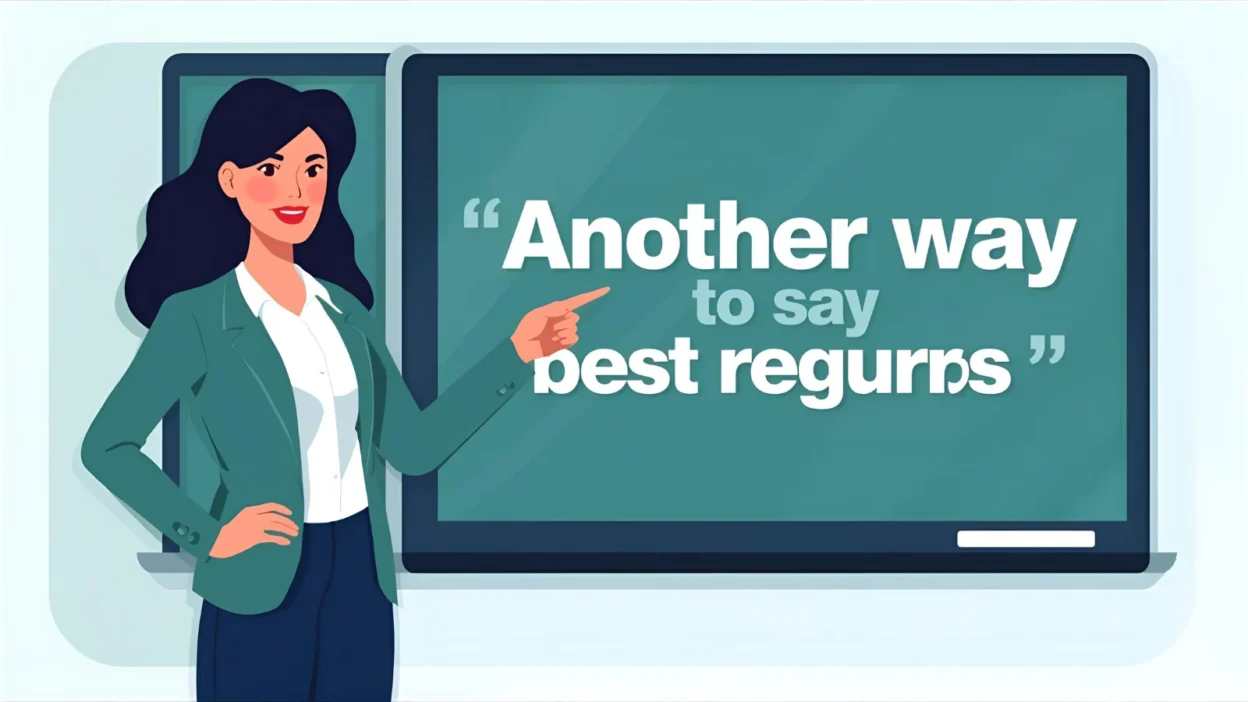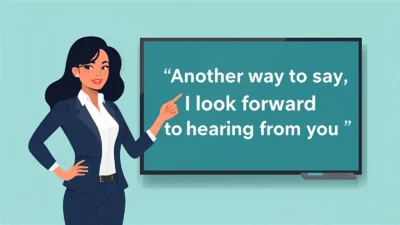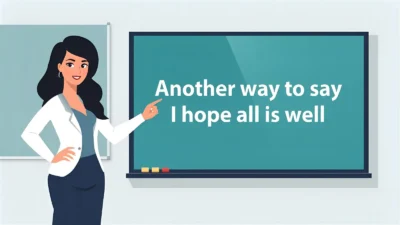The phrase “Best regards” is one of the most common and polite ways to close an email or letter. It strikes a professional and courteous tone that’s appropriate in nearly any context—from workplace communication to formal correspondence.
However, using “Best regards” in every message can start to feel repetitive or overly generic. The closing of your email is your final impression—it can reflect your professionalism, warmth, or friendliness depending on the situation.
To help you communicate with clarity and variety, here are 49 thoughtful alternatives to “Best regards”—each with a clear meaning, detailed explanation, example, best use, and tone guide.
💼 Formal and Professional Alternatives
1. Kind Regards
Meaning: A polite, professional way to end correspondence.
Detailed Explanation: Slightly warmer than “Best regards,” this is a go-to closing for business emails and client communication.
Example: Kind regards,
Maria Thompson
Best Use: Business emails, client relations, HR communication.
Tone: Polite, professional, warm.
2. Sincerely
Meaning: A classic, formal email or letter closing.
Detailed Explanation: Best for official or serious correspondence; shows professionalism and respect.
Example: Sincerely,
Dr. Ahmed Khan
Best Use: Formal letters, job applications, legal documents.
Tone: Traditional, respectful, formal.
3. Yours Sincerely
Meaning: A formal British English closing used when addressing someone by name.
Detailed Explanation: Denotes courtesy and professionalism in formal letters.
Example: Yours sincerely,
Olivia Roberts
Best Use: Formal letters, UK-style business correspondence.
Tone: Formal, courteous, refined.
4. Yours Faithfully
Meaning: A formal British sign-off when you don’t know the recipient’s name.
Detailed Explanation: Traditionally used in business or legal writing.
Example: Yours faithfully,
James Patel
Best Use: Formal letters beginning with “Dear Sir/Madam.”
Tone: Highly formal, respectful.
5. Respectfully
Meaning: Conveys professionalism and consideration.
Detailed Explanation: Often used when addressing superiors or formal audiences.
Example: Respectfully,
Lt. David Morgan
Best Use: Military, legal, or hierarchical contexts.
Tone: Formal, deferential, serious.
6. With Appreciation
Meaning: Expresses gratitude while closing politely.
Detailed Explanation: Great for follow-ups or thank-you emails.
Example: With appreciation,
Samantha Green
Best Use: Business gratitude emails, donor correspondence.
Tone: Grateful, professional, polite.
7. Warm Regards
Meaning: A friendly variation of “Best regards.”
Detailed Explanation: Balances professionalism with a touch of warmth.
Example: Warm regards,
Kevin Lee
Best Use: Client relationships, professional but friendly correspondence.
Tone: Courteous, approachable, kind.
8. With Kindest Regards
Meaning: An enhanced, more personal version of “Kind regards.”
Detailed Explanation: Adds sincerity and warmth to professional messages.
Example: With kindest regards,
Rachel Brooks
Best Use: Formal yet friendly business communication.
Tone: Warm, respectful, genuine.
9. With Gratitude
Meaning: Emphasizes thankfulness at the close of an email.
Detailed Explanation: Professional and heartfelt, suitable for appreciation notes.
Example: With gratitude,
Hannah Park
Best Use: Thank-you emails, follow-ups, partnerships.
Tone: Appreciative, warm, professional.
10. Cordially
Meaning: A polite and refined sign-off that conveys respect.
Detailed Explanation: More formal than “Warm regards,” less common but dignified.
Example: Cordially,
Michael Evans
Best Use: Invitations, introductions, or diplomatic correspondence.
Tone: Polished, courteous, formal.
💬 Semi-Formal and Friendly Alternatives
11. All the Best
Meaning: Wishing well in a casual yet professional way.
Detailed Explanation: Friendly and widely used; suitable for a range of situations.
Example: All the best,
Nora Bennett
Best Use: Team messages, networking, informal clients.
Tone: Warm, genuine, conversational.
12. Best Wishes
Meaning: Expresses positivity and goodwill.
Detailed Explanation: A friendly, versatile closing that suits personal and semi-formal contexts.
Example: Best wishes,
Anthony Clark
Best Use: Colleague communication, friendly clients, personal notes.
Tone: Warm, pleasant, sincere.
13. Many Thanks
Meaning: Expresses gratitude while closing an email.
Detailed Explanation: Great when the message involves appreciation or requests.
Example: Many thanks,
Emily Zhao
Best Use: Polite business requests, thank-you notes.
Tone: Appreciative, friendly, professional.
14. Thanks Again
Meaning: Reiterates gratitude with an approachable tone.
Detailed Explanation: Suitable for follow-ups or acknowledgment.
Example: Thanks again,
Robert Miles
Best Use: Informal professional or team communication.
Tone: Friendly, polite, conversational.
15. Cheers
Meaning: A relaxed, upbeat closing popular in British and Australian English.
Detailed Explanation: Adds an informal, collegial feel.
Example: Cheers,
Chris Williams
Best Use: Internal communication, friendly correspondence.
Tone: Casual, friendly, approachable.
16. Take Care
Meaning: Wishing well-being in a kind, personal way.
Detailed Explanation: More intimate, best for colleagues or friends.
Example: Take care,
Laura Chen
Best Use: Semi-formal personal or farewell emails.
Tone: Warm, genuine, caring.
17. With Warmest Regards
Meaning: Adds deeper warmth and sincerity to a professional sign-off.
Detailed Explanation: Ideal when you want to be polite but affectionate.
Example: With warmest regards,
David Nguyen
Best Use: Long-term professional relationships, farewells.
Tone: Heartfelt, warm, courteous.
18. Until Next Time
Meaning: Suggests anticipation of future communication.
Detailed Explanation: Friendly and optimistic without being too casual.
Example: Until next time,
Sophie Allen
Best Use: Networking, ongoing collaborations.
Tone: Positive, engaging, approachable.
19. Stay Well
Meaning: A caring way to close with goodwill.
Detailed Explanation: Especially fitting for post-pandemic email etiquette.
Example: Stay well,
Dr. Aisha Malik
Best Use: Professional but compassionate emails.
Tone: Warm, empathetic, modern.
20. With Thanks
Meaning: Expresses gratitude concisely and respectfully.
Detailed Explanation: A balanced alternative between “Best regards” and “Sincerely.”
Example: With thanks,
Benjamin Ortiz
Best Use: Professional messages involving requests or gratitude.
Tone: Polite, concise, professional.
💖 Personal and Heartfelt Alternatives
21. Warmly
Meaning: A brief, friendly closing with emotional warmth.
Detailed Explanation: Works well for personal notes or friendly colleagues.
Example: Warmly,
Olivia Stewart
Best Use: Friendly, semi-professional correspondence.
Tone: Kind, affectionate, light.
22. Fond Regards
Meaning: A soft, affectionate alternative to “Best regards.”
Detailed Explanation: Often used in warm personal or long-term relationships.
Example: Fond regards,
Helen Foster
Best Use: Personal notes, farewell messages.
Tone: Gentle, heartfelt, respectful.
23. Yours Truly
Meaning: Classic and courteous; expresses sincerity.
Detailed Explanation: Common in American English for formal letters.
Example: Yours truly,
Jonathan King
Best Use: Formal or personal letters.
Tone: Traditional, respectful, sincere.
24. Wishing You the Best
Meaning: Expresses goodwill and positivity.
Detailed Explanation: Adds a warm, caring tone to messages.
Example: Wishing you the best,
Ava Johnson
Best Use: Personal, farewell, or congratulatory emails.
Tone: Optimistic, kind, genuine.
25. Yours Warmly
Meaning: A warm and slightly formal variant of “Warm regards.”
Detailed Explanation: Balanced between sincerity and professionalism.
Example: Yours warmly,
Daniel Price
Best Use: Professional but heartfelt correspondence.
Tone: Courteous, kind, graceful.
Conclusion
The phrase “Best regards” is reliable and respectful—but varying your sign-offs adds personality, emotion, and professionalism to your communication.
- For formal settings, use “Sincerely,” “Yours faithfully,” or “Respectfully.”
- For balanced professionalism, try “Kind regards,” “With thanks,” or “Warm regards.”
- For friendly or personal messages, use “All the best,” “Take care,” or “Warmly.”



